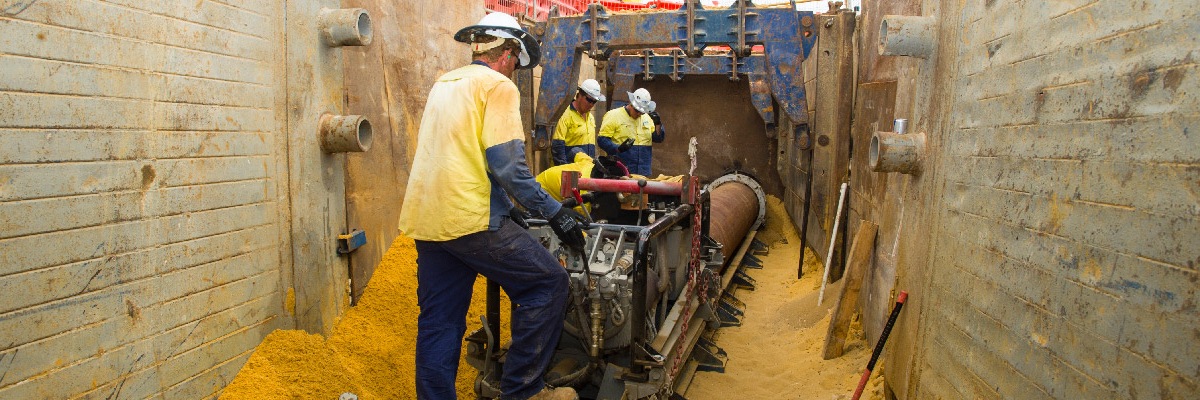Low Impact Drilling: The Trenchless Technology Difference
April 2016
With continued expansion of the Western Australian infrastructure, low-impact drilling techniques are becoming more mainstream practice. Trenchless Technology methods can help to reduce traffic impact, public disruption and the resulting devaluation of the asphalt from trench cuts. Traditional open-cut excavation methods for installing, renovating or maintaining services are often disruptive and uneconomical, and the true social costs and environmental impact of such disruption is not taken into account. This has resulted in an ever increasing demand for methods of pipeline installation and refurbishment which have the capability of performing this work without the need for trenching.
Planners and Civil Engineeers increasingly understand the opportunities that alternative trenchless technologies have to offer. Designers are now designing with the knowledge that a wide range of trenchless techniques are available – with continuing economic advantages.
DM Civil have been using a variety of Trenchless Technology applications, since the mid 1980’s, to provide flexible alternatives and tunnelling combinations to install infrastructure varying from DN150 to DN1600 in any ground conditions.
We employ slurry shield and rock microtunneling, directional drilling, pilot auger boring and auger boring, for installing new infrastructure and rehabilitating existing underground assets. This provides many benefits to councils, water authorities and communities in order to provide safer worksites for contractors, to minimise social costs to communities, and to reduce costs involved in capital works programs.
Once there is a greater awareness of the trenchless technology and the advantages of the range of techniques available, the true potential of no-dig techniques will start to be realised. DM Civil have been at the forfront of this technology and we aim to continue to lead the
